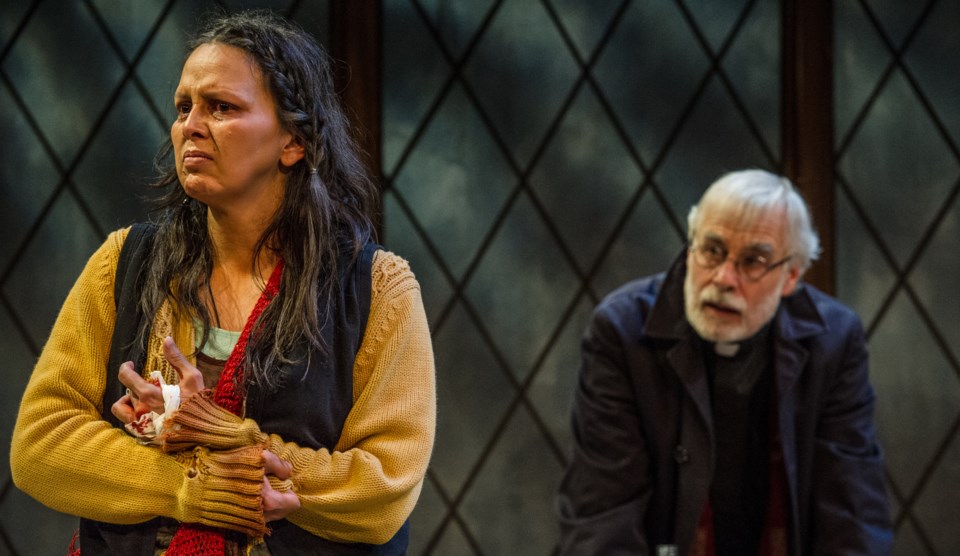God and the Indian were not on speaking terms when they ran into each other that day.
While pan-handling outside a Tim Hortons, Johnny, a Cree survivor of the residential school system, encounters an Anglican priest from her childhood. Convinced he was one of her abusers, the woman follows Assistant Bishop George King to his office to confront him.
But, after all these years, can Johnny’s memories be trusted? Can King’s?
Such is the tense premise of God and the Indian, a two-person play by acclaimed Aboriginal author and playwright Drew Hayden Taylor.
At one time, more than 130 residential schools were located across Canada. The last school closed in 1996.
Written during the Truth and Reconciliation Commission (TRC) hearings, which have created an official record of this dark period based on testimony from more than 6,000 residential school survivors, the play couldn’t have been more timely.
Coming back two years later for a second run at the Firehall Arts Centre, just before the planned release of the TRC’s findings on June 2, it still is.
“I’ve run across so many people who have gone through the residential school system, that I wanted to see how I would approach it,” says Taylor. “To help shed some light on a really sad and unfortunate aspect of Canadian-Aboriginal history.”
God and the Indian also marks the latest in the Firehall’s lengthy history of producing First Nations theatre. The arts company was among the first in Vancouver, in the mid-’80s, to make First Nations programming part of its mandate.
“The Firehall mission exists to produce and present theatre, dance, interdisciplinary arts reflective of the cultural pluralism of Canada,” says Firehall artistic producer says Donna Spencer. “So we’re looking at what might stimulate an audience to feel a closeness to Canadian society, and gain a greater understanding of all the different people that live in Canada.”
The Firehall’s progressive programming has not only helped develop a talented pool of First Nations actors, but also served as the genesis of artists like local Métis playwright Marie Clements, whose first play, Age of Iron, was a Firehall production.
“We’ve put on five or six of Drew Hayden Taylor’s plays,” says Spencer, “and I think he, as a playwright, has grown, but also the First Nations actors that we’ve employed.”
In fact, it was a First Nations actress who would have a pivotal impact on the final version of Taylor’s play. God and the Indian had originally been written for a man, but when actress Tantoo Cardinal expressed interest in the part, Taylor says he saw the opportunity to tell a better story.
“The more I thought about it,” says Taylor, “it added a whole different level to the storytelling that I found really positive. On a metaphoric level, approaching this from a woman’s perspective, where the woman is the creator and protector and teacher of children in the culture, sort of gave it a thicker substance.”
And by paring it down to two people sifting through 40-year-old memories, Taylor is attacking the macro world through the micro; Johnny’s exploration of healing is less a search for a personal apology, and more a quest for acknowledgement.
“God and the Indian is a very special play right now,” says Spencer. “I feel its important that we continue to do work that reminds our audience that this issue was not just an issue that impacted First Nations people, but had impact on Canada as a whole. It had tremendous impact, through generations, and that impact impacts all of us.”
• God and the Indian runs May 20-30. FirehallArtsCentre.ca


